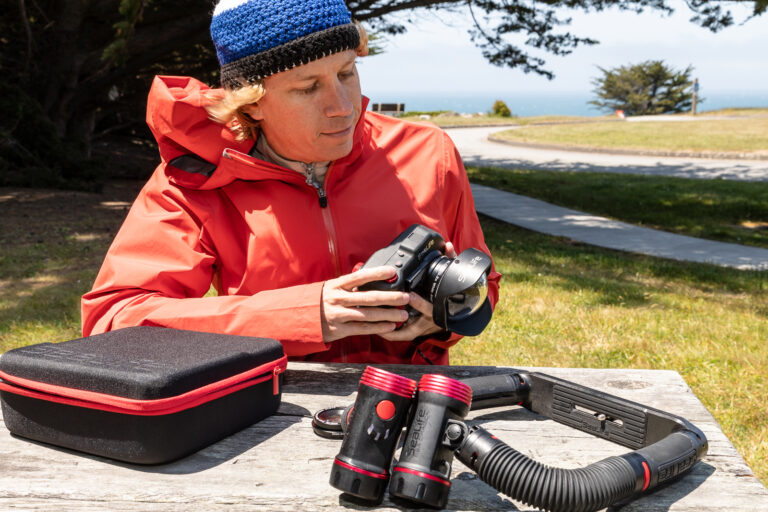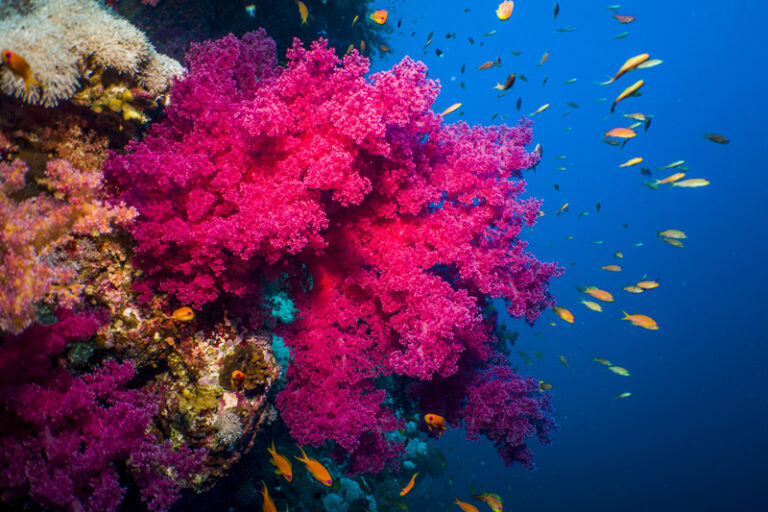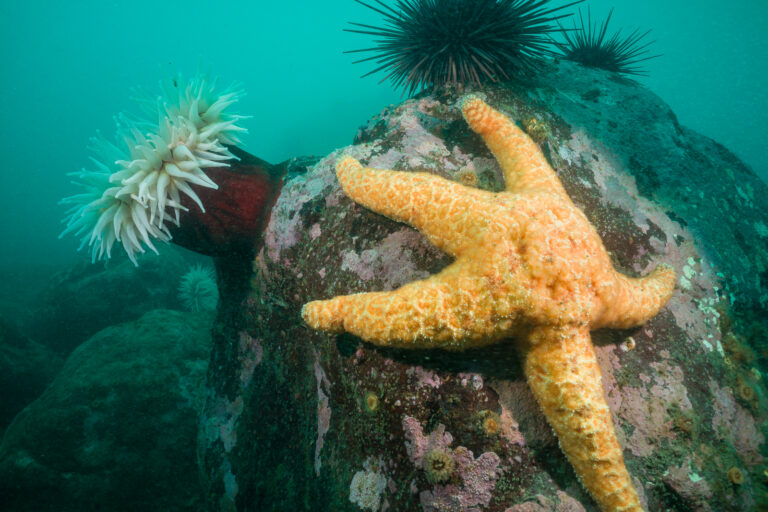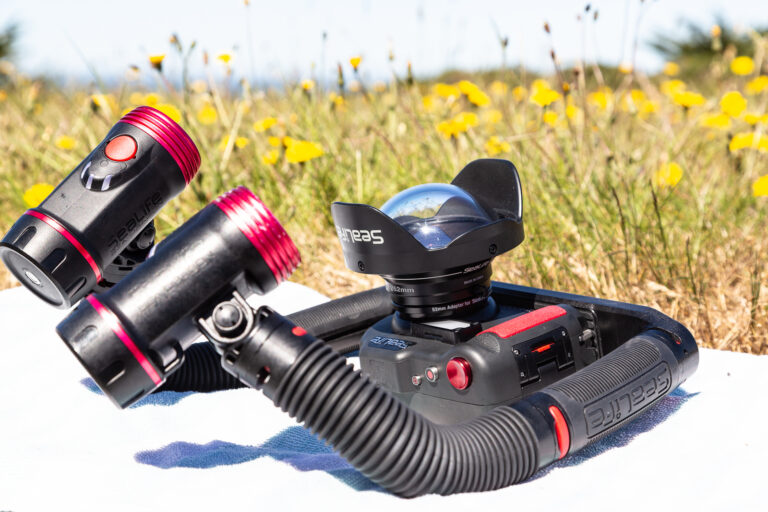How to Shoot Great Wide-Angle Images
Brent Durand

Brent Durand offers his expertise in taking underwater photographs with the compact, easy-to-use SeaLife DC2000 camera.
Great wide-angle images can take many forms. They can show dramatic reefscapes, depict the fast action of swimming dolphins, or present the eerie vibe of a deep shipwreck.
We generally categorize wide-angle underwater photography as any shot with a wide field of view. So, while a fish or moray eel photo falls more on the macro side, a photo of your dive buddy can be considered wide-angle.
Interchangeable lens camera shooters opt for wide-angle or fisheye lenses to shoot these scenes, while compact shooters can choose from an array of wide-angle wet lenses that significantly expand the camera’s field of view. I’m shooting the SeaLife DC2000 and new 0.5x Wide Angle Dome Lens for this article. The duo creates an effective focal length of 16mm – perfect for some creative wide-angle photography.
Ambient Light Wide-Angle
Shooting in ambient light, often referred to as available light, is the technique we use when subjects are beyond the reach of our underwater lights or strobes. We’re only dealing with a single light source (the sun), so I suggest letting the DC2000 do some of the thinking for us. This is particularly useful when shooting quickly in several directions, like when swimming with whale sharks.
Twist the mode dial to the underwater mode icon. Next, select the appropriate underwater scene mode by tapping the menu key and pressing OK on the first item. You should choose the appropriate mode below based on depth.
- Snorkel: Under 33 Feet (10m)
- Dive: 25– 60 Feet (8 – 18m)
Ambient Light Photo Tip
- Try to position the sun behind you when shooting in ambient light. This will make the reef, wreck or animal much lighter, resulting in a brighter image with less intense shadows.
Artificial Light Wide-Angle
Artificial lighting uses the beam from our video light or strobe to illuminate the foreground subject. This light brings back the vibrant color and contrast that are lost as we descend in the water column. The closer we are to the subject, the better, since the light will be able to bring out more of this color.

Photo taken by Tobias Friedrich with a DC2000.
This style of shooting is perfect for the 0.5x Wide Angle Dome Lens since the wide field of view allows you to get very close to the subject while still seeing the entire scene in the frame.
The SeaLife DC2000 has two different Underwater Scene Modes for wide-angle shooting – one for using a flash and one for a constant video/dive light. You can set this by turning the mode dial to the fish icon, pressing Menu, and then selecting either Ext Flash or Ext Light in the Underwater Scene Mode menu area.
Alternatively, advanced shooters can choose full manual settings for exposing their images, adjusting ISO, aperture, shutter speed and strobe/light power by hand. This provides the most flexibility in controlling ambient water color, depth of field, and subject brightness.

Photo taken by Brent Durand with a DC2000.
Artificial Light Photo Tips:
- Get close to your subject. This has two benefits. First, the less water and particulate between the dome port and the subject, the clearer the subject will appear. Second, light intensity falls off exponentially in water, so you will get the best color and contrast results from your strobe by shooting close to your subject. The beauty of the 0.5x Dome Lens is that the extremely wide field of view allows you to get close while still seeing the full scene.
- Keep your strobe at a 1 or 2 o’clock position. This will light your subject while also creating slight shadows on the side opposite the strobe, which will help create depth in the image.
- Locate a recognizable, colorful subject. This subject will take up a big portion of your frame, so try to find something that will attract your viewer’s interest. Sponges, corals, or critters that are at the same level or above you will help to eliminate clutter in the background of the scene.

Photo taken by Brent Durand.
Bonus Tips: Using Your 0.5X Wide Angle Dome Lens
Burp the Lens. That’s right! If you attach your wet lens while on the surface and then enter the water, you’ll likely have some bubbles on the glass between camera housing and dome Lens. Once you’ve descended, remove the wet lens and wave your hand in front of both camera and lens to blow off any bubbles before reconnecting.
Use a SeaLife Lens Caddy: The 0.5x Dome Lens is removable, and when you do detach it from the housing you can attach it safely to the Lens Caddy. The Lens Caddy mounts on a variety of strobe arms, creating the perfect place to store the Dome Lens when not in use. It will even hold the DC-Series Super Macro Lens, which is excellent since carrying both lenses creates the most versatile system for wide-angle and macro on a single dive!

